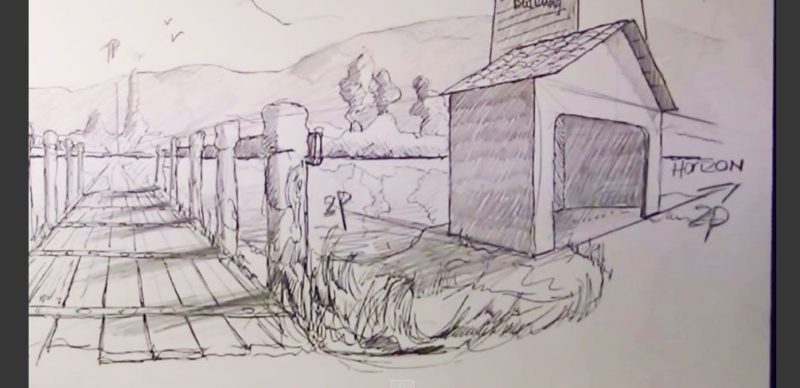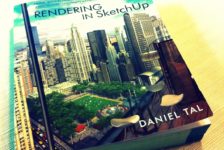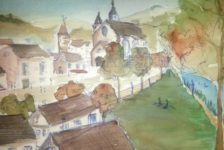Good hand drawing skills are an excellent tool for any landscape architect to have. But here’s a little secret, you don’t have to be born with it, you can learn. On our way to becoming skilled artists, we have to learn lots of lessons and often fight inner voices that tell us to give up because we are “just not good enough”. However, we don’t have to master this challenging process on our own! On the one hand, there are countless beginners who struggle the same as we do; but on the other hand, there is this huge YouTube artist community trying to motivate and support us as we improve our drawing skills. These great Samaritans post thousands of free videos to help us continue practicing our drawings and give useful advice. In this article, I found and summed up the best seven videos for novice artists. 1. How to Get Started — A Motivation Boost To tackle the improvement of your drawing skills, you just need to do one simple thing: Keep on drawing, no matter how much you hate your drawings in the beginning! I know for myself that this sounds easier than it turns out to be. However, drawing is in fact just a skill that can be learned and improved over time. The author of this video clears up with some myths about drawing and no longer accepts excuses of people claiming they can’t draw. Everyone can learn how to draw, so please sit down and watch this motivational boost. WATCH: The Best Ways to Learn Drawing
2. How to Draw Basic Figures The most basic thing every artist has to learn is how to draw figures. This important lesson is explained in an easily understandable way and slowly enough to allow you to draw simultaneously on your own with the video. Additionally, you will get an insight into the anatomical relations of the human body. Grab a pencil and a piece of paper and start practicing your figures. WATCH: How to Draw the Figure from the Imagination
3. Details are Nothing Without Gesture This video lesson teaches us about an important element that makes drawings look dynamic –gesture. The best way to familiarize oneself with gesture is through quick sketch drawing. To express emotion in drawings, it is important to focus on quick and elongated “action lines” as seen in this video. WATCH: How to Draw Gesture
4. Shadows and Shading Cross hatching, parallel lines, smudging — there are different ways to shade your objects or figures in a drawing. This short video presents those types in an easy-to-understand manner, using simple forms that will allow you to practice them right away. WATCH: Shading Lessons: Learn How to Draw Shades
5. Expensive Drawing Materials are Overrated Even if professional artists own a wide range of drawing supplies, you don’t need to amass a plethora of expensive drawing equipment. In my opinion, a soft pencil (2B), paper, and maybe an eraser are sufficient to begin with. In your ongoing drawing process, you will find yourself getting more confident in trying out new drawing styles that require other tools. If you have already reached this stage, or if you want to be prepared for everything from the beginning on, this video will help you make the correct choice of drawing materials. Other Articles You May be Interested in:
- Freehand Drawing & Discovery, by James Richards | Book Review
- Hand Drawing versus Computer Rendering. Which is Best for Landscape Architecture?
- Drawing for Landscape Architecture, by Edward Hutchison l Book Review
WATCH: Drawing Class: Beg Drawing I: Drawing Materials
6. How to Draw Perspective Perspective drawings are the key to an authentic and real look. Perspectives vary in their number of disappearing points; the most common ones are 1-point perspective, 2-point perspective, and 3-point perspective, which are all used in this video. If you are already familiar with the very basics of perspective drawings, skip the first six-and-a-half minutes and watch the author draw a simple, but beautiful landscape in the second half. WATCH: How to Draw Perspective
7. Keep on Practicing In the end, I wanted to give you some advice as shown in this video: To become a confident artist, you must practice drawing over and over again. For example, if you want to draw portraits, the best way is to fractionize the face and learn to draw various eyes, noses, mouths, ears, and so on. Of course, the same applies to trees in landscapes and items in every other drawing, too. WATCH: How to Practice Drawing
– As we all know, the world of YouTube is endless. That’s why choosing only seven videos that should be representative for teaching us how to draw was a really difficult task. The recommended videos aim to explain only the most important steps in getting started with drawing. Although I hope those were very helpful for you, please keep watching other videos to practice the topics that you are truly interested in and seek for your own drawing style.
Recommended Reading:
- Drawing and Designing with Confidence: A Step-by-Step Guide by Mike W. Lin
- Landscape Perspective Drawing by Nicholas T. Dines
Article by Sophie Thiel
Published in Blog









Pingback: How To Draw Youtuber – Autocad Space